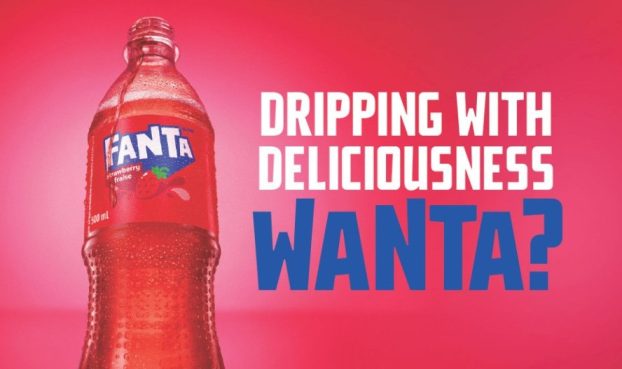There it sits on your coffee table, poking out from a stack of magazines and yesterday’s mail. And while it may look like a magazine, it’s actually a flyer.
Open it up and you might find within its pages a recipe for a smashing new cocktail you hope to whip up for Friday night’s dinner party. Or there’s a picture of that yummy chocolate liqueur you’re sure your sister will want for her birthday. You’re hanging onto it because maybe – the Liquor Control Board of Ontario (LCBO) hopes – you’re going to use it as a check list on your next trip to the liquor store.
That’s a marketer’s dream, really – to produce advertising that’s so effective consumers hang onto it, bring it into the store and buy the products being advertised.
‘And that’s what stores like our Queen’s Quay outlet in Toronto tell us people do,’ says Chris Layton, media relations co-ordinator for the Toronto-based LCBO. ‘Quite often people come into the store with the glossy FSI [free-standing insert] in hand, especially if there are new products featured in it, or products they’re not familiar with.’
FSIs are still in the process of winning over wary marketers, but more and more retailers are upgrading their stock and adding glossies in a supporting cast role, often as part of a larger overall integrated multimedia campaign.
The LCBO, which in recent years has ramped up its overall marketing efforts, has embraced the high-impact medium, making FSIs a cornerstone for its advertising strategy. While last year the government-owned retailer only produced a few glossy FSIs, in fiscal 2002/03, LCBO execs are planning to produce 26 of them to run throughout the year. Some are seasonal – a beer campaign in the middle of August for instance – while others are simply promoting new products.
‘We started to do them because our customer research has shown us that consumers are looking for information on the products that we sell, so it’s very much information-driven,’ says Layton.
As well as distributing its own Food & Drink magazine in-store, the LCBO distributes FSIs through four newspapers – the Globe and Mail, National Post, Toronto Star and Ottawa Citizen. Layton says such FSIs tie directly in with an integrated marketing approach, one in which tactical in-store promotions link directly to the preprints.
Aside from showcasing new products, the LCBO (which produces several FSIs in partnership with suppliers) drives home the information push by adding advice about matching wine and spirits with food, and cocktail suggestions for new liqueurs and spirits.
‘As we modernize the LCBO and make it more customer-focused, similar to a modern retailer, this reflects an ongoing sophistication of our marketing,’ says Layton. ‘And unlike traditional advertising, we’re able to use greater space with these, more colour and we can put information on them. The format is very valuable to marketing beverage alcohol.’
That’s consistent with what other marketers say. Glossy FSIs are largely image-driven and the best ones combine a branding effort with a product-specific promotion.
Others making the switch to glossy or even a heavy calendar-like stock (called soft-nip calendar) include Zellers, Future Shop, Bell Canada, BMW, Danier Leather, Sport Chek, Rogers AT&T Wireless, Old Navy and Holt Renfrew. And the move to FSIs is not limited to Canada alone – recently Gap distributed a 24-page catalogue touting its new line of jeans throughout the U.S.
But notice the trend: these companies don’t sell laundry detergent or cereal, they tend to sell luxury, or at least ‘non-essential’ type products.
‘What we’re seeing is many major retailers have started to move up to soft-nip calendar stock which has more clay in it and adds a glossier finish,’ says Norrie Meth, SVP of the North America retail group at Calgary-based Transcontinental Publishing & Printing. In fact, Meth says that as recently as two years ago, 60% of his clients were using newsprint for flyers and 40% used higher grades. Today, only about 30% of his clients are using newsprint, while use of the other stocks has risen to 70%.
‘They’re extremely effective and they’re also cost-efficient, meaning you get probably a bigger impact and generate more results per dollar invested in the standalone preprints than you would regular run-of-press advertising,’ says Len Kubas, president of marketing research and consulting firm Kubas Consulting in Toronto.
He adds that Craig Sinclair, SVP advertising at the U.S. drugstore chain Walgreen’s, has publicly stated that he finds such preprints to be four times more effective than run-of-press.
The main advantage offered by glossy preprints is quality. Many say that the print quality you get with glossy flyers allows you to show off the colour and fine detail of a product, which helps to convey that you’re a higher-end brand, whether you’re advertising a fine wine, a leather coat or a luxury car.
That’s why Whitby, Ont.-based BMW Group Canada turned to glossy FSIs this past January to help launch its new BMW Series 7 cars. ‘Obviously with these cars, we wanted to ensure very accurate reproduction,’ says Manfred Braunl, BMW’s national marketing manager. ‘The FSIs really underlined the premium aspect of the product. You can’t always depend on the print quality of the dailies, which really varies quite often.’
While BMW’s FSI campaign was product-specific, Braunl says it was also designed to bolster the car maker’s branding efforts. It’s likely that only a small population would actually be able to afford a Series 7 car (which costs from $90,000 to $105,000), but readers whose interest is captured by the flyer may consider purchasing a more affordable Series 3.
BMW made its flyer dollars go even farther by using the glossies as direct mail pieces and take-aways at dealerships and auto shows as well. ‘I cannot stress enough that these flyers emphasize the quality,’ says Braunl, who says BMW Canada will likely produce two or three more FSIs for next year’s launches.
The only drawback to glossies (aside from the greater cost) that marketers point to is lead time – such FSIs sometimes need to be produced weeks or even months ahead of time. So unlike a newspaper ad, which can be sent in the night before, they aren’t appropriate for next week’s specials. But for the impact they get – anecdotally to date because marketers say they haven’t studied the hard numbers – many retailers are willing to take that extra time to plan.
Part of that planning, naturally, means developing high-impact creative that’s appropriate for the medium. Full-colour is a must, and as Meth points out, some retailers are even studying which colours make the most impact (customers respond favourably to blue tones for example).
‘It’s also about keeping it simple,’ says Meth. ‘People don’t want flaps or things that fold out – they say just give us a tabloid, catalogue or broadsheet size that’s very easy to look at.’ But unusual sizing also seems to work well. Unlike a pre-printed newsprint section which could easily get tossed into the recycling bin by accident, a catalogue-sized glossy housed in a broadsheet newspaper really stands out.
As strong as the creative may be, Braunl points out that it’s also important to have sole presence in the paper that day. ‘You should be the only insert the day it’s delivered,’ he says. ‘If you have lots of inserts, then of course they lose impact. You need one strong impact.’ And to make that strong impression, Meth says that while some marketers have pulled back on the page count of the flyers they’re using, they’re opting for the better stock. ‘Basically they’re using less paper, but they’re using a higher grade,’ he says.
Targeting the drop precisely helps marketers get a better return on their FSI dollars, and such precision is something that’s easier and easier to achieve thanks to the sophistication of modern geo-mapping distribution systems. ‘We’re delivering to smaller and smaller zones – I don’t think there’s any question about that,’ says Sandy Muir, VP marketing and advertising sales for the Toronto-based Globe and Mail.
In fact, better geographic planning is playing a crucial role in the growth of glossy FSIs as an advertising medium. ‘It’s absolutely essential, from our perspective anyway,’ says Paul Gaynor, president of Markham, Ont.-based geo-mapping firm Market Focus Direct. ‘Theoretically the more sophisticated the distribution planning is, the fewer flyers there should be. There are more and more people realizing the value of targeting.’
Indeed, these days, geo-mapping can pinpoint drops as accurately as one side of a street, or the immediate area surrounding a particular store.
As marketers warm to the idea of switching over to glossy, they maintain that as part of an overall campaign involving other media channels, glossy FSIs offer great value for money.
‘From the feedback we’re getting, and the customers coming into the stores, we’re finding this is an effective tool to deliver information,’ says the LCBO’s Layton. ‘This isn’t something we’re just looking at short-term – we’re probably going to continue doing this in future years.’
‘I think this medium will definitely be growing in the future,’ says Kubas. ‘As people realize the results you get when you combine it with sophisticated demographic targeting, more and more marketers are going to be using [preprints] to target their advertising.’























